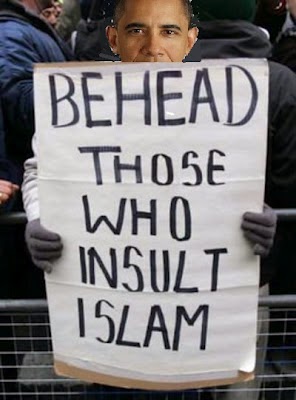Green Energy

From Fox:
- Obama Astonishes
From the New York Post: As the June 30 deadline for the Iran nuclear deal approaches, President Obama is putting all his cards on the table — by announcing he is keeping no cards in his hand. In an astonishing interview with Israel’s Channel...
- Morning Session Talks Between Iran, P5+1, Ended After Just 35 Minutes
Reports from Lausanne say that the talks may not end in a framework agreement, as had been hoped, but rather with a joint statement that outlines the points of agreement and disagreement between the sides. Meanwhile MEMRI reports Iran has not given in...
- The End Of American Credibility
As many of us know, or should know, nuclear talks have been ongoing now between the west and Iran designed to ensure the racist freak show running that poor nation does not get any nuclear weapons, and try to carry out what every leader since 1979 has...
- October Surprise? Obama Admin Agrees To One-on-one Direct Talks With Iran Over Nuke Program, Israel Says White House Kept Them In The Dark
From NY Times: The United States and Iran have agreed for the first time to one-on-one negotiations over Iran’s nuclear program, according to Obama administration officials, setting the stage for what could be a last-ditch diplomatic effort...
- Barack Obama Was The Kid Who Always Had A Kick Me Sign Taped To His Back. . .
tick tock etc etc etc Newsmax: U.S. Official: Iran Military Strike 'Off the Table' Wednesday, 21 Apr 2010 07:24 AM The U.S. has ruled out a military strike against Iran's nuclear program any time soon, hoping instead negotiations and United...
Green Energy
Obama's "Agreement" to Perform Analingus on Iran In Exchange for a Free and Clear Path to Nuclear Weapons

From Fox:
What we actually have in writing about the areas of agreement between Iran and the US-led P5+1 group of nations is full of holes. Worse, it is already being described differently in English and in Persian — a matter that will surely complicate the task of writing a final, binding draft by June 30.
Even the statement we have was merely released in the name of EU foreign-policy czarina Federica Mogherini and Iran’s foreign minister, Javad Zarif. It’s not signed, because almost no one had the authority to sign anything at this stage.
Many of the agreements plainly benefit Iran: – Iran will continue its full nuclear program, keeping open all its sites — including Fordo, Isfahan, Natanz and Arak, the closure of which had been a key demand of the United States and its allies for the past decade or so.
- The heavy-water nuclear plant at Arak will be finished, despite Washington’s once-strong objections.
-Iran can upgrade its installations at Fordo but will focus the site on producing isotopes for medical and agricultural use. (Of course, Iran can switch the site back to producing weapons materiel whenever it chooses.)
-Once the final draft is approved by the UN Security Council, all sanctions imposed against Iran would be lifted. In the meantime, the P5+1 agree not to impose any new sanctions on Iran over the nuclear issue.
– Once the UN Security Council has passed a resolution canceling all its previous resolutions on the Iranian nuclear issue, a timetable would be established for the mutual implementation of the accords by Iran and other powers.
Thus, the prospective deal would legalize much of what Iran has already done in violation of its past treaty commitments, and free the Iranians of the sanctions imposed because of those violations.
What would Iran promise to do in return?
- Obama Astonishes
From the New York Post: As the June 30 deadline for the Iran nuclear deal approaches, President Obama is putting all his cards on the table — by announcing he is keeping no cards in his hand. In an astonishing interview with Israel’s Channel...
- Morning Session Talks Between Iran, P5+1, Ended After Just 35 Minutes
Reports from Lausanne say that the talks may not end in a framework agreement, as had been hoped, but rather with a joint statement that outlines the points of agreement and disagreement between the sides. Meanwhile MEMRI reports Iran has not given in...
- The End Of American Credibility
As many of us know, or should know, nuclear talks have been ongoing now between the west and Iran designed to ensure the racist freak show running that poor nation does not get any nuclear weapons, and try to carry out what every leader since 1979 has...
- October Surprise? Obama Admin Agrees To One-on-one Direct Talks With Iran Over Nuke Program, Israel Says White House Kept Them In The Dark
From NY Times: The United States and Iran have agreed for the first time to one-on-one negotiations over Iran’s nuclear program, according to Obama administration officials, setting the stage for what could be a last-ditch diplomatic effort...
- Barack Obama Was The Kid Who Always Had A Kick Me Sign Taped To His Back. . .
tick tock etc etc etc Newsmax: U.S. Official: Iran Military Strike 'Off the Table' Wednesday, 21 Apr 2010 07:24 AM The U.S. has ruled out a military strike against Iran's nuclear program any time soon, hoping instead negotiations and United...
